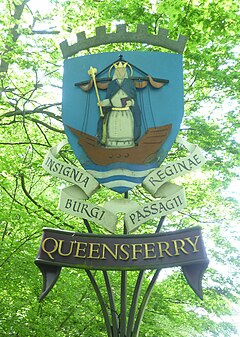
Fife is a council area, historic county, registration county and lieutenancy area of Scotland. It is situated between the Firth of Tay and the Firth of Forth, with inland boundaries with Perth and Kinross and Clackmannanshire. By custom it is widely held to have been one of the major Pictish kingdoms, known as Fib, and is still commonly known as the Kingdom of Fife within Scotland. A person from Fife is known as a Fifer. In older documents the county was very occasionally known by the anglicisation Fifeshire.
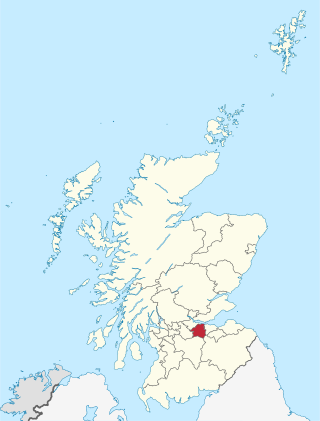
West Lothian is one of the 32 council areas of Scotland, and was one of its historic counties. The county was called Linlithgowshire until 1925. The historic county was bounded geographically by the Avon to the west and the Almond to the east. The modern council area occupies a larger area than the historic county. It was reshaped following local government reforms in 1975: some areas in the west were transferred to Falkirk; some areas in the east were transferred to Edinburgh; and some areas that had formerly been part of Midlothian were added to West Lothian.

The Firth of Forth is the estuary, or firth, of several Scottish rivers including the River Forth. It meets the North Sea with Fife on the north coast and Lothian on the south.

North Queensferry is a historic coastal village in Fife, Scotland, situated on the Firth of Forth, 9 mi (14 km) from Edinburgh city centre. Located on the North Queensferry Peninsula, it is the southernmost settlement in Fife.

Broughty Ferry is a suburb of Dundee, Scotland. It is situated four miles east of the city centre on the north bank of the Firth of Tay. The area was a separate burgh from 1864 until 1913, when it was incorporated into Dundee. Historically it is within the County of Angus.
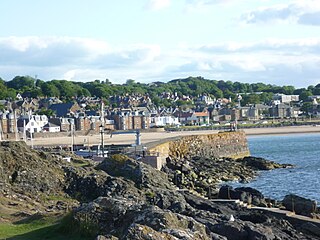
North Berwick is a seaside town and former royal burgh in East Lothian, Scotland. It is situated on the south shore of the Firth of Forth, approximately 20 miles (32 km) east-northeast of Edinburgh. North Berwick became a fashionable holiday resort in the nineteenth century because of its two sandy bays, the East Bay and the West Bay, and continues to attract holidaymakers. Golf courses at the ends of each bay are open to visitors.

Inverkeithing is a coastal town, parish and historic Royal burgh in Fife, Scotland, on the Firth of Forth, 9½ miles northwest of Edinburgh city centre and 4 miles south of Dunfermline city centre.

Burntisland is a former Royal burgh and parish in Fife, Scotland, on the northern shore of the Firth of Forth. It was previously known as Wester Kinghorn or Little Kinghorn. The town has a population of 6,269 (2011).

The Fife Circle Line is the local rail service north from Edinburgh. It links towns of south Fife and the coastal towns along the Firth of Forth before heading to Edinburgh. Operationally, the service is not strictly a circle route, but, rather, a point to point service that reverses at the Edinburgh end, and has a large bi-directional balloon loop at the Fife end.
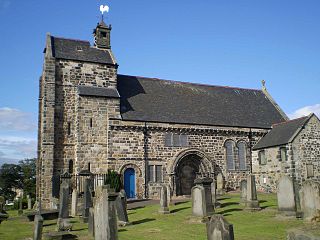
Kirkliston is a village and parish to the west of Edinburgh, Scotland, historically within the county of West Lothian but now within the City of Edinburgh council area limits. It lies on high ground immediately north of a northward loop of the Almond, on the old road between Edinburgh and Linlithgow, having a crossroads with the road from Newbridge to Queensferry and beyond to Fife. The B800 is variously named Path Brae, High Street, Station Road, and Queensferry Road as it passes through the town. The B9080 is named Main Street and Stirling Road as it passes through.
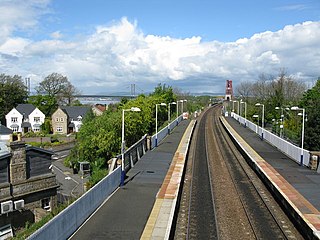
Dalmeny railway station is a railway station serving the towns of Dalmeny and South Queensferry, about 8 miles (13 km) west of Edinburgh city centre. It is on the Fife Circle Line, located just south of the Forth Bridge.

Dalmeny is a village and civil parish in Scotland. It is located on the south side of the Firth of Forth, 1 mile (1.6 km) southeast of South Queensferry and 8 miles (13 km) west of Edinburgh city centre. It lies within the traditional boundaries of West Lothian, and falls under the local governance of the City of Edinburgh Council. Dalmeny is on the route used as the X99 Queensferry off-service loop.
The B800 is a short road in eastern Scotland, connecting the Forth Road Bridge to Kirkliston. It is a two-way single carriageway road.

A mercat cross is the Scots name for the market cross found frequently in Scottish cities, towns and villages where historically the right to hold a regular market or fair was granted by the monarch, a bishop or a baron. It therefore served a secular purpose as a symbol of authority, and was an indication of a burgh's relative prosperity. Historically, the term dates from the period before 1707, when the Kingdom of Scotland was an independent state, but it has been applied loosely to later structures built in the traditional architectural style of crosses or structures fulfilling the function of marking a settlement's focal point. Historical documents often refer simply to "the cross" of whichever town or village is mentioned. Today, there are around 126 known examples of extant crosses in Scotland, though the number rises if later imitations are added.
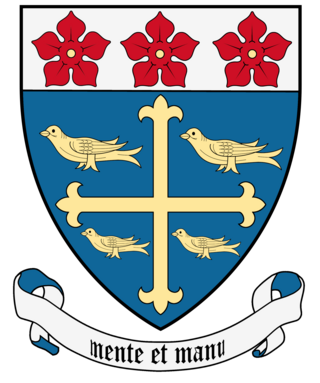
Queensferry High School is a six-year comprehensive school in the town of South Queensferry, Scotland, run by the City of Edinburgh Council. It was opened in 1970 by Princess Margaret marking the 900th anniversary of the arrival of Queen Margaret in Queensferry. Currently it has 1036 students, predominantly from Echline Primary School, Queensferry Primary School, Dalmeny Primary School and Kirkliston Primary School. It was made a School of Ambition in 2007.

The City of Edinburgh Council is the local government authority covering the City of Edinburgh council area. Almost half of the council area is the area of Edinburgh, capital of Scotland. With a population of 514,990 in mid-2019, it is the second most populous local authority area in Scotland.
The Firth of Forth was historically crossed by ferry until the opening of the Forth Road Bridge in 1964.
The Dunfermline and Queensferry Railway was a railway company founded to form part of a rail and ferry route between Dunfermline and Edinburgh, in Scotland. It was authorised in 1873 and its promoters had obtained informal promises from the larger North British Railway that the NBR would provide financial help, and also operate the ferry and the necessary railway on the southern side of the Firth of Forth.
The Forth Bridge approach railways were railway lines constructed in the period 1887 to 1890 to form new main lines on the opening of the Forth Bridge at the Queensferry crossing. Until then, only local branch lines approached the location. The North British Railway built new main lines and upgraded some existing lines.

The Loony Dook is an annual event held on New Year's Day in which people dive into the freezing waters of the Firth of Forth at South Queensferry, often in fancy dress.
